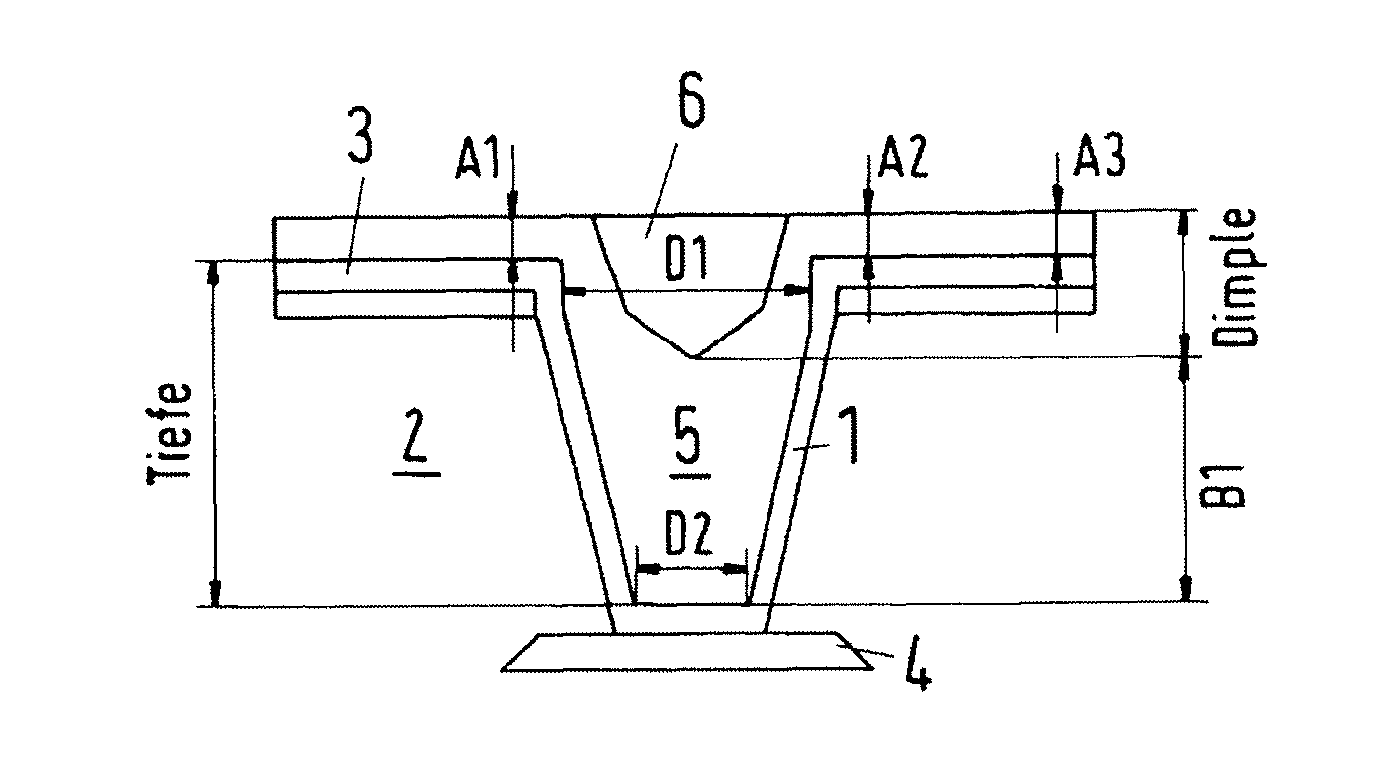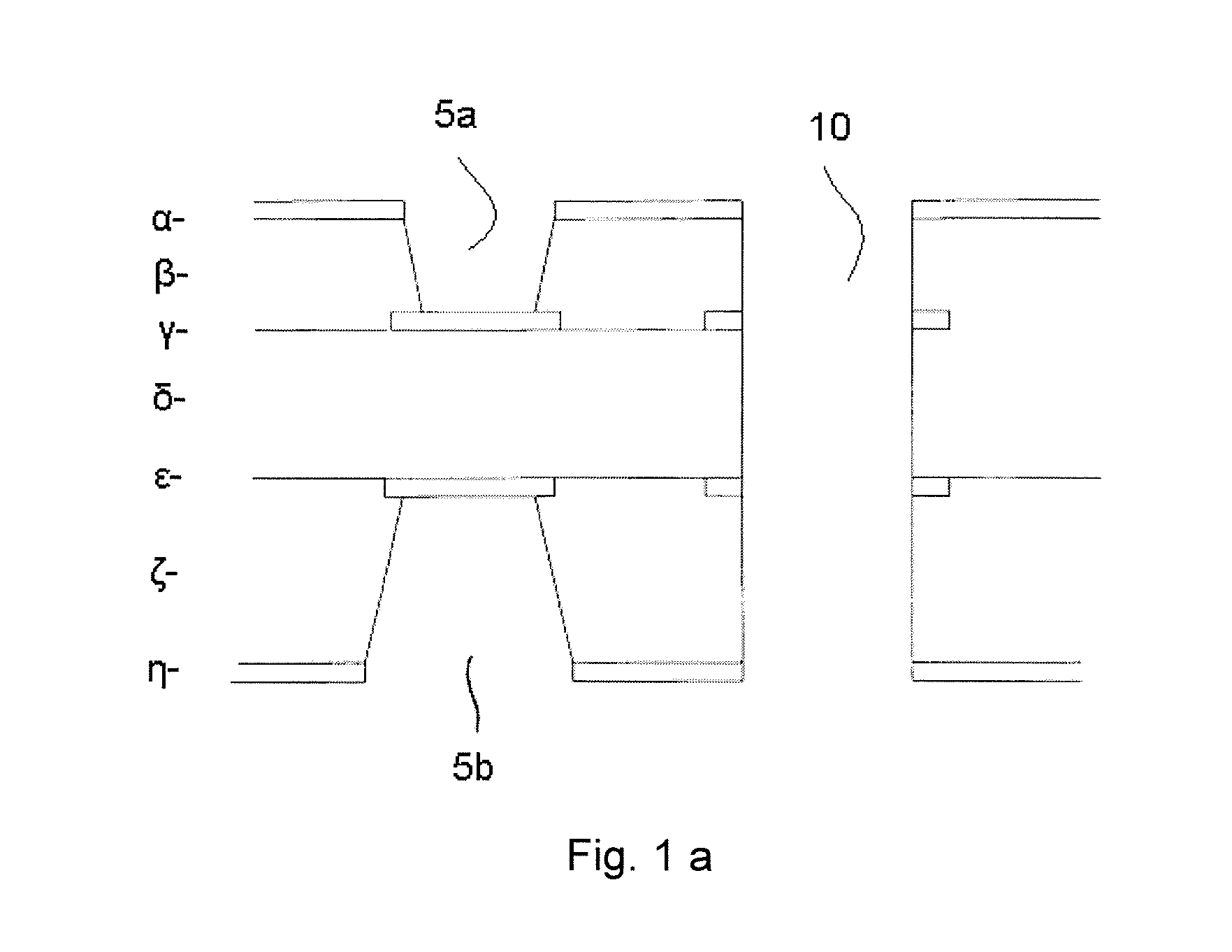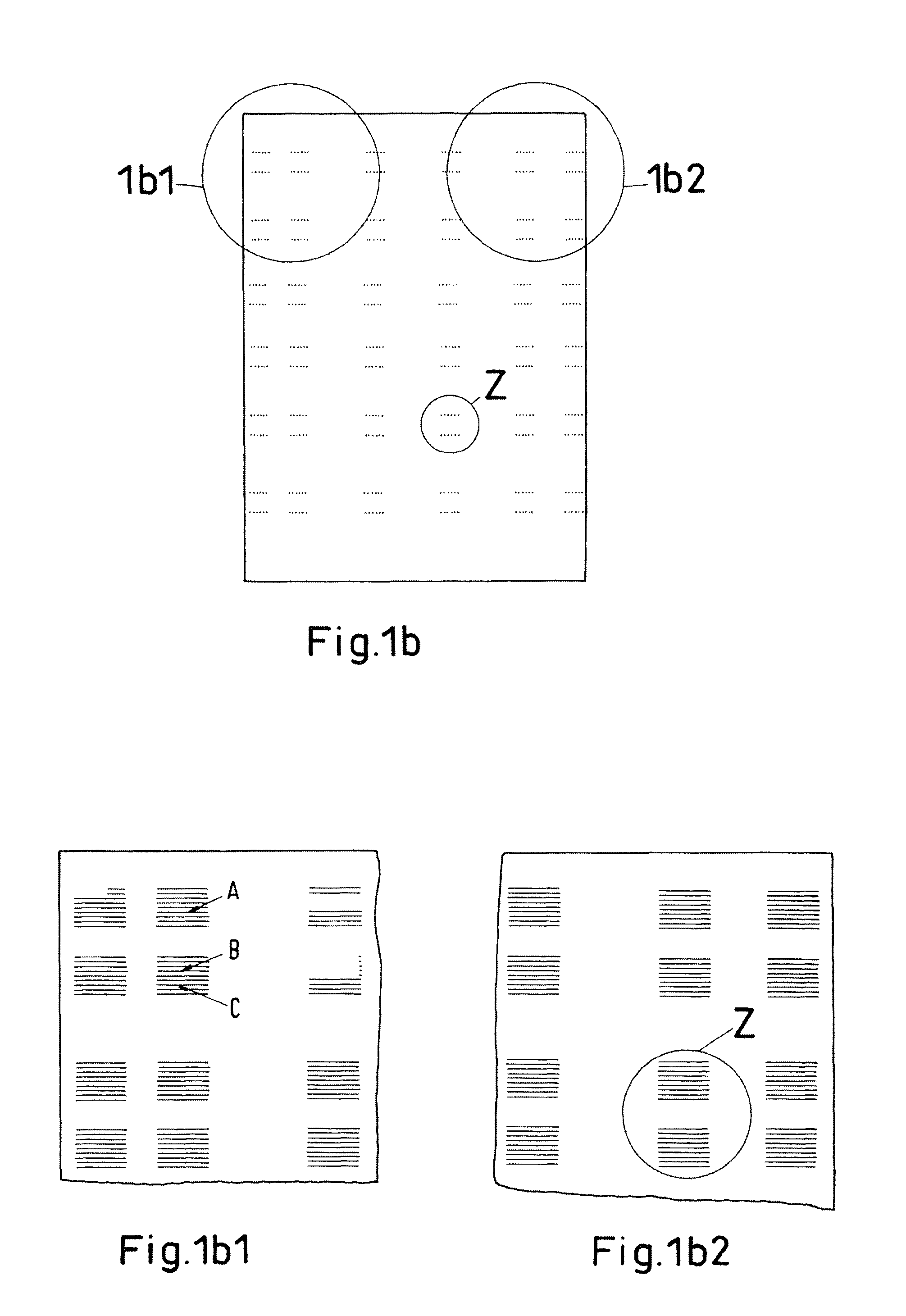Aqueous, acid bath and method for the electrolytic deposition of copper
a technology of electrolysis and copper, applied in the field of acid bath and method for electrolysis deposition of copper, can solve the problems of difficult uniform deposition of copper in view of geometric arrangement, rejection of the entire printed circuit board or chip carrier, and inability to meet the requirements of the electrolytic process, so as to limit the roughness of deposited copper and facilitate the drilling of holes through the copper foil
- Summary
- Abstract
- Description
- Claims
- Application Information
AI Technical Summary
Benefits of technology
Problems solved by technology
Method used
Image
Examples
example 1
OF THE INVENTION
[0076]Leveller: NH2-Gly-Leu-OH
[0077]The printed circuit boards were coated with copper with different leveler content in the bath. First of all a test was carried out without leveler for comparison purposes. Then tests according to the invention were carried out with increasing leveler content. The evaluation was effected by removing micro-sections at a previously defined position on the printed circuit board. The dimple was used as a measurement for the filling of a BMV. FIG. 2 shows the determining of this test parameter in a schematic manner: The wall of a BMV made electrically conductive by means of conventional methods is given the numeral 1. This conductive layer merges on the surface of the adjoining photoresist layer 2 into a plated surface 3, for example a conductor path. The base of the plating in the BMV is in electrical contact with a copper layer 4. The BMV is filled with copper 5 using the method according to the invention. However, a top region 6 is no...
example 2
OF THE INVENTION
[0083]NH2-Gly-Leu-OH exhibits BMV filling characteristics. In contrast to conventional levelers, however, the amino acids and peptides never cause a ski slope. This advantageous effect can be used to selectively influence the line shape in the baths for the filling of BMVs without impairing the BMV filling. To investigate the line shape a test board was coppered, said board having channels as produced by photoresists. The said channels were filled with copper under the specified conditions, NH2-Gly-Leu-OH, as specified in Example 1 of the Invention, being used as the leveler. The copper layer grew uniformly and formed a rectangular structure 2 in the trench (FIG. 6).
[0084]This is not observed, however, with conventional levelers that are usually used for filling vias. For a comparative test of this type, NH2-Gly-Leu-OH was not used as leveler but rather an Atotech Cupracid® HL bath with BMV filling characteristics. In this case, a concave deposition shape was observe...
PUM
| Property | Measurement | Unit |
|---|---|---|
| mean molecular weight | aaaaa | aaaaa |
| concentration | aaaaa | aaaaa |
| concentration | aaaaa | aaaaa |
Abstract
Description
Claims
Application Information
 Login to View More
Login to View More - R&D
- Intellectual Property
- Life Sciences
- Materials
- Tech Scout
- Unparalleled Data Quality
- Higher Quality Content
- 60% Fewer Hallucinations
Browse by: Latest US Patents, China's latest patents, Technical Efficacy Thesaurus, Application Domain, Technology Topic, Popular Technical Reports.
© 2025 PatSnap. All rights reserved.Legal|Privacy policy|Modern Slavery Act Transparency Statement|Sitemap|About US| Contact US: help@patsnap.com



